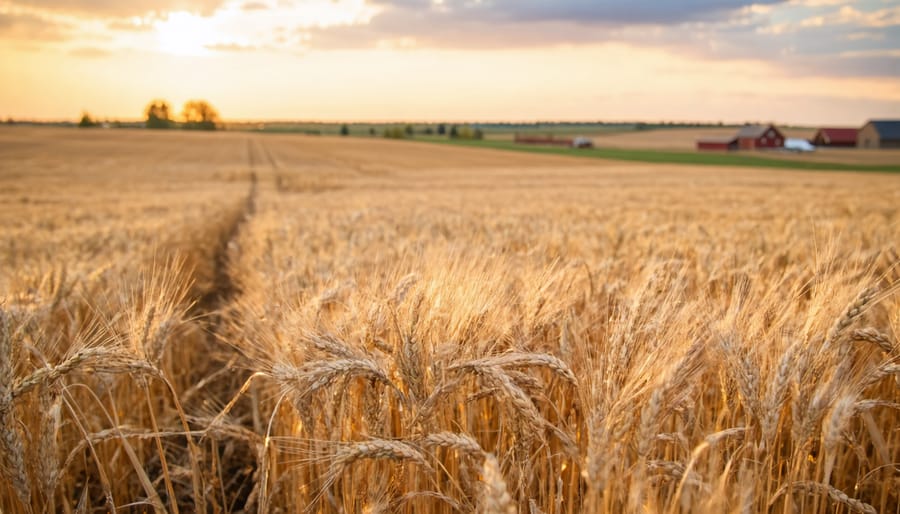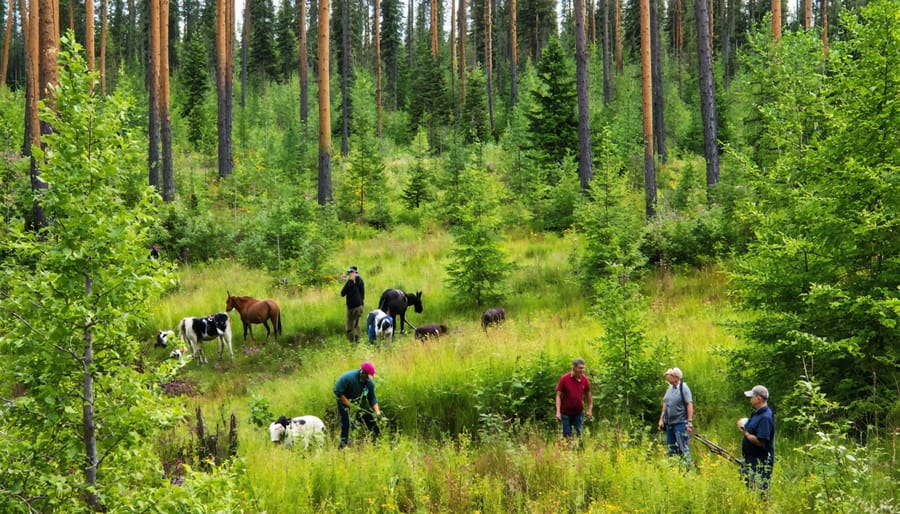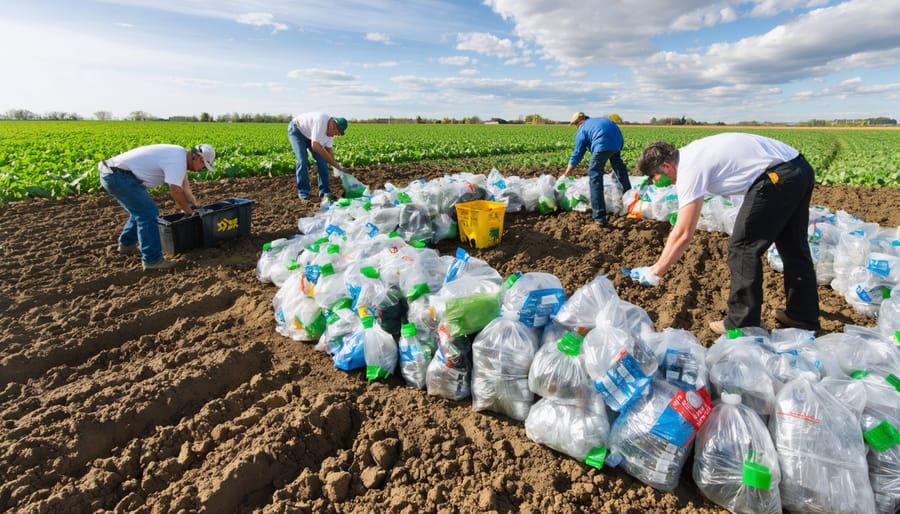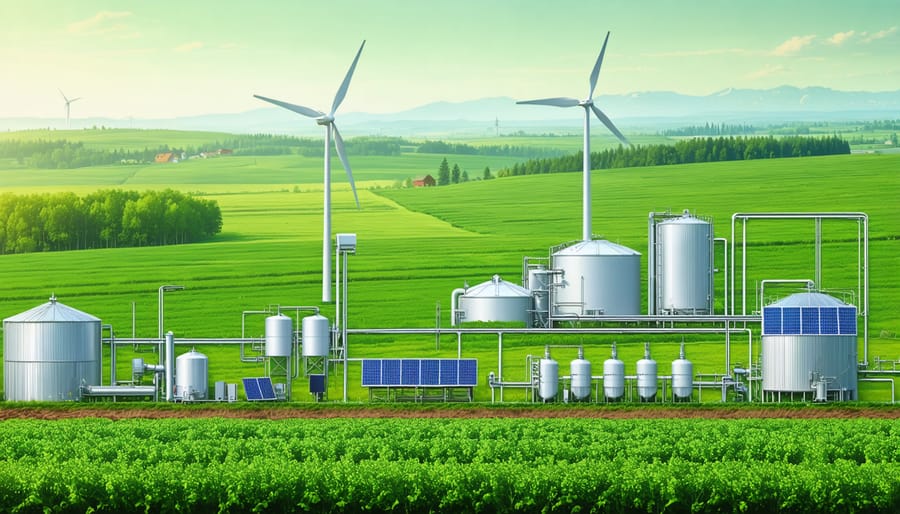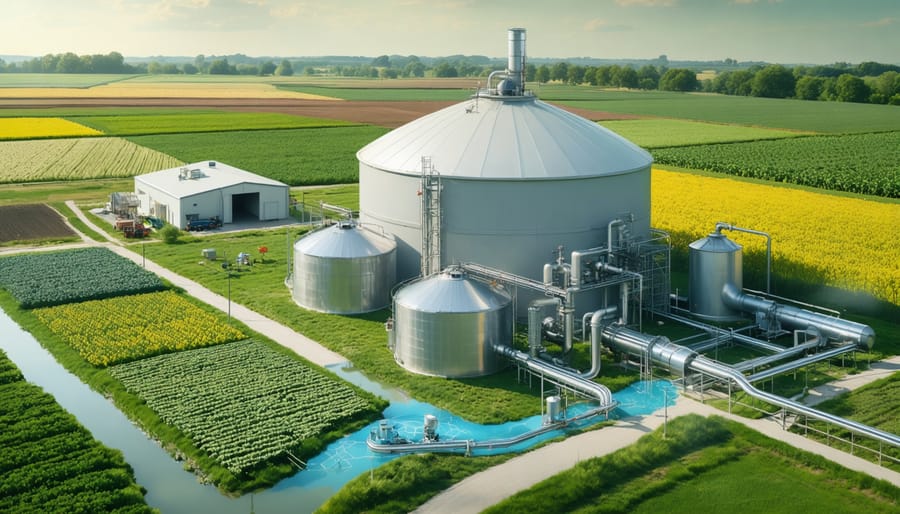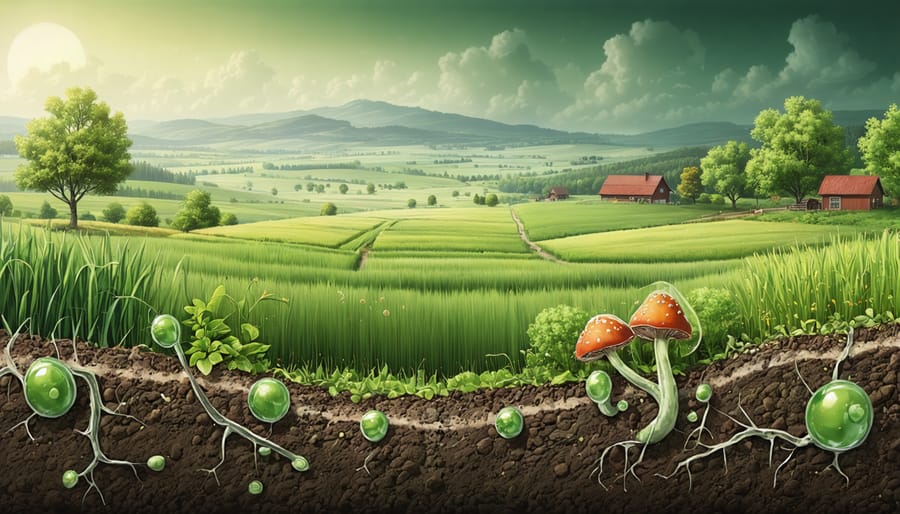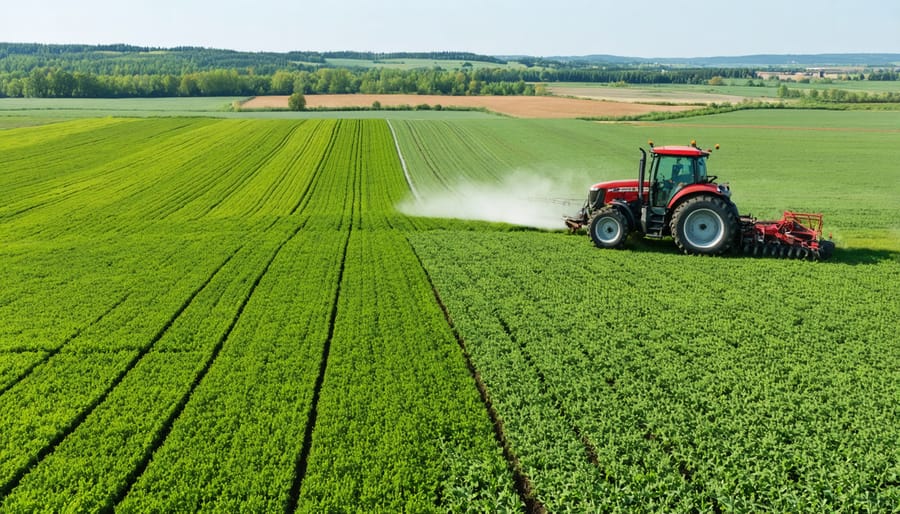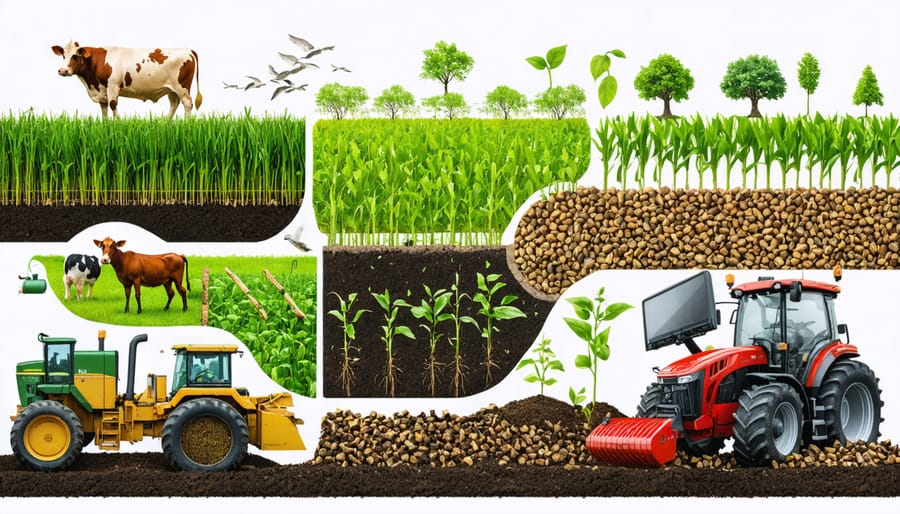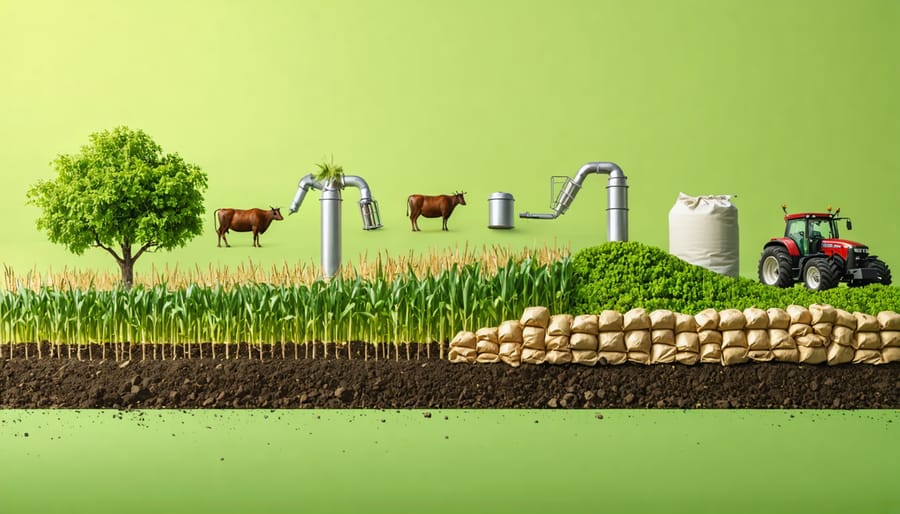Transform agricultural waste into valuable resources by harnessing the 2.5 million tonnes of crop residue produced annually across Alberta’s farmlands. From wheat straw to corn stalks, these materials represent an untapped revenue stream worth an estimated $500 million for Canadian farmers. Modern harvesting and processing techniques now convert these former “waste products” into high-value commodities, including biofuels, animal feed, and organic soil amendments.
In Alberta’s Prairie provinces, where sustainable agriculture drives innovation, agricultural residues are revolutionizing farm economics. Leading producers are already generating 15-25% additional income through strategic residue management, while simultaneously improving soil health and reducing their environmental footprint. These practices align with Canada’s clean technology initiatives and create new market opportunities for forward-thinking agricultural operations.
Beyond immediate economic benefits, proper residue management addresses critical challenges facing modern agriculture, including soil erosion, carbon sequestration, and the growing demand for sustainable farming practices. By implementing strategic residue collection and processing systems, Alberta farmers are positioning themselves at the forefront of agricultural innovation while building more resilient and profitable farming operations.
Common Agricultural Residues in Alberta Farms
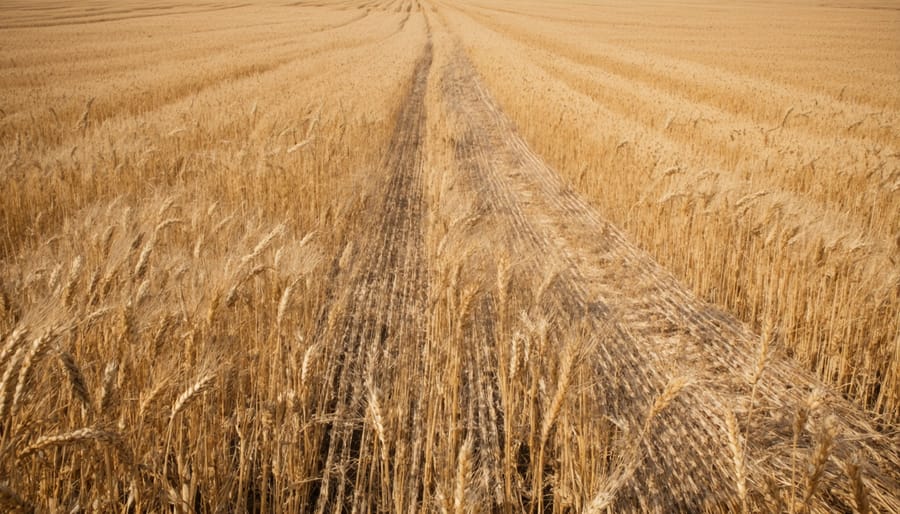
Crop Residues
Alberta’s crop residues primarily consist of wheat straw, barley straw, canola stalks, and oat residues, reflecting our province’s main crop production. On average, each hectare of wheat produces 2.5 to 3.5 tonnes of straw, while canola generates 3 to 4 tonnes of stalks and pods per hectare.
These residues serve multiple purposes on Alberta farms. Many producers incorporate them back into the soil to improve organic matter content and maintain soil health. Others bale the straw for livestock bedding or feed, particularly during drought years when forage is scarce.
The characteristics of different crop residues vary significantly. Wheat straw typically has a carbon-to-nitrogen ratio of 80:1 and breaks down more slowly than barley straw. Canola residues, with their hollow stems, decompose more quickly but can be challenging to manage during seeding operations.
Recent innovations have opened new opportunities for crop residue use in Alberta. Some farmers are exploring partnerships with bioprocessing facilities, while others are implementing advanced residue management systems to optimize soil benefits while reducing tillage requirements.
Processing Residues
Processing residues are valuable by-products generated during the cleaning, milling, and processing of agricultural products. In Alberta’s grain sector, these residues primarily come from wheat, barley, and canola processing facilities. Common examples include grain screenings, hull materials, and broken kernels separated during cleaning operations.
Local flour mills generate significant amounts of bran and wheat germ during processing, while oilseed crushing plants produce substantial quantities of hulls and meal. These materials, often overlooked, can be excellent sources of livestock feed supplements or organic soil amendments.
Many Alberta farmers are finding innovative ways to utilize these processing residues. For instance, some operations collect screenings from local grain terminals to supplement their cattle feed, while others partner with food processing facilities to secure a steady supply of nutrient-rich residues for composting.
The key to managing processing residues effectively lies in proper storage and handling. Clean, dry storage facilities help maintain residue quality and prevent spoilage. Some farmers have successfully implemented on-farm processing systems to handle these materials, creating additional revenue streams while reducing waste in the agricultural supply chain.
Environmental Benefits of Residue Management
Soil Health Enhancement
Agricultural residues play a vital role in maintaining and enhancing soil health across Alberta’s diverse farming landscapes. When crop residues are left on fields or properly incorporated into the soil, they create a natural protective layer that shields the soil from erosion caused by wind and water. This protection is especially crucial during our harsh prairie winters and spring thaws.
These residues gradually break down through microbial activity, releasing essential nutrients back into the soil. A hectare of wheat stubble, for instance, can return up to 25 kg of nitrogen and 3 kg of phosphorus to the soil over time. The decomposition process also increases organic matter content, improving soil structure and water-holding capacity – particularly beneficial for our semi-arid regions.
The presence of crop residues encourages beneficial soil organisms, creating a thriving underground ecosystem. These organisms help break down organic matter, cycle nutrients, and create stable soil aggregates. Many Alberta farmers have reported improved soil tilth and reduced compaction after implementing residue management practices.
Residues also help regulate soil temperature, reducing extreme fluctuations that can stress crops and soil microorganisms. During summer, they keep soil cooler and conserve moisture, while in winter, they insulate the soil from severe frost. This temperature moderation extends our growing season and provides better conditions for early spring seeding.
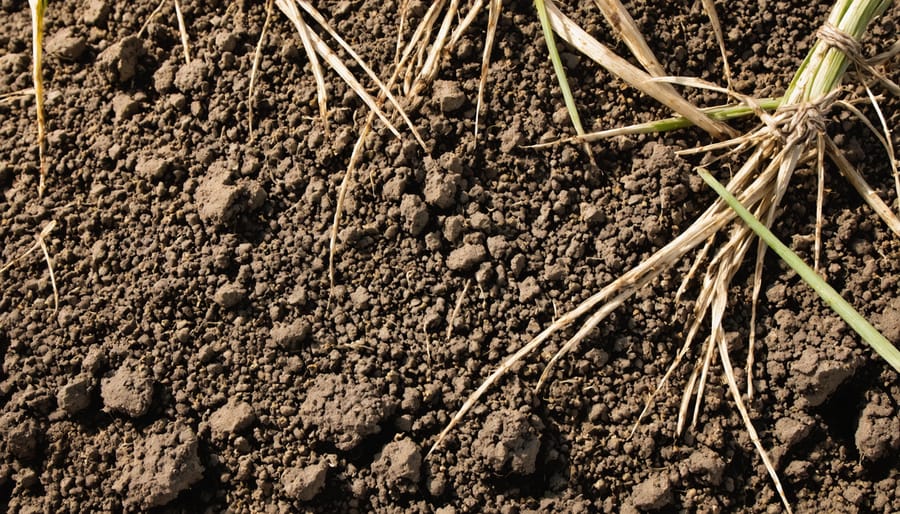
Carbon Sequestration
Agricultural residues play a vital role in carbon cycling in agriculture, offering farmers a powerful tool for reducing their operation’s carbon footprint. When crop residues are left on fields or properly managed, they contribute significantly to soil carbon sequestration, helping to draw down atmospheric CO2 and store it in the soil.
Studies from Alberta’s agricultural research stations show that maintaining crop residues can sequester between 0.2 to 0.5 tonnes of carbon per hectare annually. This translates to a significant reduction in farm-level greenhouse gas emissions while improving soil health. The practice of leaving stubble and straw on fields after harvest creates a natural carbon sink, where organic matter gradually breaks down and becomes part of the soil’s carbon pool.
Farmers across the prairie provinces have found that incorporating residue management into their operations not only benefits the environment but also enhances soil structure and water retention. For example, combining residue retention with reduced tillage can increase organic carbon content by up to 15% over five years, according to research conducted at the Lethbridge Research Centre.
The key to maximizing carbon sequestration lies in balanced management – retaining enough residue to build soil carbon while ensuring proper decomposition rates. This approach aligns with both environmental stewardship goals and practical farming needs, making it a win-win strategy for Canadian agriculture.
Profitable Residue Valorization Methods
Bioenergy Production
Agricultural residues offer tremendous potential for sustainable energy production, particularly in Alberta’s farming communities. Through various conversion processes, these residues can be transformed into valuable bioenergy sources, reducing farm operating costs while contributing to environmental sustainability.
The most common method is biogas production from farm waste, where crop residues and livestock manure are processed in anaerobic digesters. This technology is gaining traction across Alberta, with several successful installations generating both electricity and heat for farm operations.
Crop residues can also be processed into solid biofuels, such as pellets or briquettes, providing an alternative heating source for farm buildings and greenhouses. For example, the Lethbridge Research Centre has demonstrated that wheat straw pellets can generate up to 17 megajoules per kilogram of energy, making them a viable replacement for traditional heating fuels.
Direct combustion systems are another practical option, where cleaned and processed residues are burned in specially designed furnaces to generate heat and power. Several Alberta farms have implemented these systems, reporting significant reductions in energy costs during winter months.
When considering bioenergy production, it’s important to maintain a balance between residue removal for energy and soil conservation. Consulting with local agricultural extension services can help determine the optimal amount of residue to harvest for energy production while maintaining soil health.
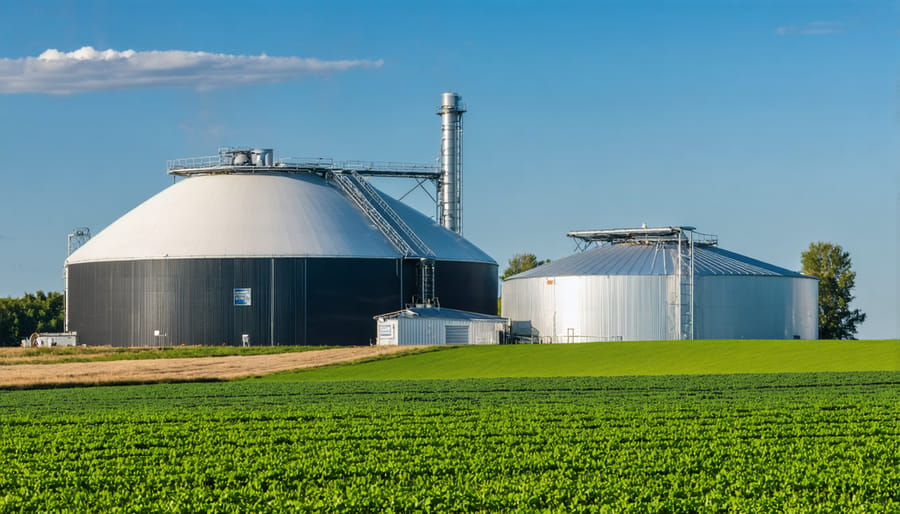
Composting and Soil Amendments
Agricultural residues can be transformed into valuable soil amendments through effective composting practices, offering farmers a sustainable way to improve soil health while reducing waste. By implementing proven composting systems, Alberta farmers have successfully converted crop residues into nutrient-rich organic matter.
The key to successful composting lies in maintaining the right balance of carbon-to-nitrogen ratios. Straw and chaff provide carbon-rich materials, while fresh green residues and manure contribute necessary nitrogen. For optimal results, maintain moisture levels between 50-60% and ensure adequate aeration through regular turning.
Many Alberta farmers have found success by combining various residue types: cereal straw, corn stalks, and legume residues create well-balanced compost. Adding livestock manure can accelerate decomposition and enhance nutrient content. The finished product typically contains valuable macro and micronutrients, beneficial microorganisms, and organic matter that significantly improves soil structure.
To maximize benefits, apply compost in spring or fall at rates of 10-15 tonnes per hectare. This practice has shown particular success in sandy soils and areas prone to erosion. Local success stories demonstrate that properly managed residue composting can reduce fertilizer costs by up to 30% while improving soil water retention and crop yields.
Value-Added Products
Agricultural residues can be transformed into various high-value products, creating additional revenue streams for Canadian farmers. In Alberta, innovative farmers are converting wheat straw into biodegradable packaging materials, while others are processing canola residue into bio-based chemicals for industrial use.
Crop residues can be processed into bioethanol and other biofuels, providing a sustainable alternative to fossil fuels. Local processing facilities are particularly interested in corn stover and wheat straw, offering farmers competitive prices for these materials. Many Alberta farmers are also exploring the production of biochar, a valuable soil amendment that can be manufactured from various crop residues through pyrolysis.
The mushroom cultivation industry regularly sources wheat and barley straw from local farmers, using these residues as growing substrate. Additionally, innovative companies are developing technologies to convert agricultural residues into eco-friendly construction materials, including particle board and insulation.
Animal bedding remains a steady market for processed straw and corn stalks, particularly in areas with significant livestock operations. Some forward-thinking farmers have also begun producing pelletized residues for the growing biomass heating market, serving both residential and commercial customers.
Research at Canadian agricultural institutions continues to uncover new applications for farm residues, including the development of bio-based plastics and specialized paper products, offering promising future opportunities for diversification.
Implementation Success Stories
Alberta’s farming community has demonstrated remarkable innovation in agricultural residue management, with several successful waste valorization stories emerging from different regions.
Take Roger Henderson’s farm near Lacombe, for instance. By implementing a comprehensive straw management system, he increased his soil organic matter by 2.3% over five years while reducing fertilizer costs by 30%. Henderson’s approach involves leaving precisely calculated amounts of canola and wheat residue, which he monitors using simple field testing methods.
In the Peace River region, Sarah Martinez transformed her challenge with excess grain chaff into an opportunity. She partnered with a local mushroom producer, supplying cleaned and processed chaff as growing medium. This partnership now generates an additional $15,000 in annual revenue while solving her residue management concerns.
The Johansen family farm near Medicine Hat showcases another innovative approach. They installed a small-scale biogas digester that processes crop residues along with livestock manure. The system now powers their grain drying operation and heats two greenhouses, saving approximately $22,000 in annual energy costs.
Perhaps most inspiring is the community initiative in Camrose County, where six neighbouring farms collaborated to establish a residue collection and processing center. They pool their resources to process straw and chaff into livestock bedding and soil amendments, creating a profitable local market while improving their soil health.
These success stories demonstrate that with careful planning and innovative thinking, agricultural residues can become valuable assets rather than management challenges. The key to success, as these farmers note, lies in starting small, measuring results, and gradually scaling up operations based on proven outcomes.
Agricultural residues represent a significant opportunity for Canadian farmers to enhance their operations’ sustainability and profitability. Throughout this article, we’ve explored how crop leftovers and farm waste can be transformed into valuable resources, from soil amendments to bioenergy feedstock and eco-friendly products.
For Alberta farmers looking to begin their residue valorization journey, the first step is conducting a thorough assessment of your available residue types and volumes. Consider connecting with local agricultural extension offices or joining farmer-led initiatives that focus on sustainable practices. Many successful Alberta farmers have already pioneered innovative approaches to residue management, proving that what was once considered waste can become a valuable farm asset.
The next crucial step is identifying the most suitable valorization method for your operation. Whether it’s composting for soil health improvement, selling residues to bioprocessing facilities, or developing on-farm processing capabilities, choose an approach that aligns with your farm’s scale and resources.
Remember that government programs and agricultural organizations offer support through grants, technical assistance, and networking opportunities. By starting small and scaling up gradually, you can develop a residue management strategy that works for your specific situation.
As our agricultural sector continues to evolve, making the most of farm residues isn’t just environmentally responsible – it’s becoming increasingly essential for maintaining competitive and resilient farming operations. Take that first step today by reaching out to your local agricultural advisor or joining a farmers’ network focused on sustainable practices.

